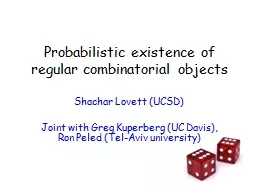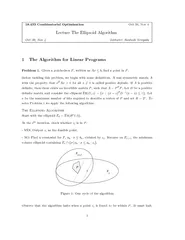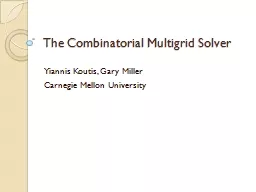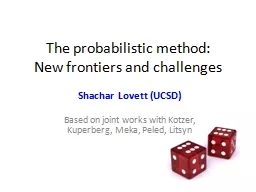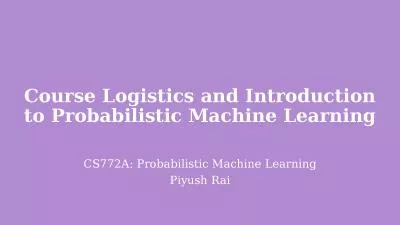PPT-Probabilistic existence of regular combinatorial objects
Author : test | Published Date : 2017-06-07
Shachar Lovett UCSD Joint with Greg Kuperberg UC Davis Ron Peled TelAviv university Overview Regular combinatorial objects Probabilistic model Main Theorem random
Presentation Embed Code
Download Presentation
Download Presentation The PPT/PDF document "Probabilistic existence of regular combi..." is the property of its rightful owner. Permission is granted to download and print the materials on this website for personal, non-commercial use only, and to display it on your personal computer provided you do not modify the materials and that you retain all copyright notices contained in the materials. By downloading content from our website, you accept the terms of this agreement.
Probabilistic existence of regular combinatorial objects: Transcript
Download Rules Of Document
"Probabilistic existence of regular combinatorial objects"The content belongs to its owner. You may download and print it for personal use, without modification, and keep all copyright notices. By downloading, you agree to these terms.
Related Documents

